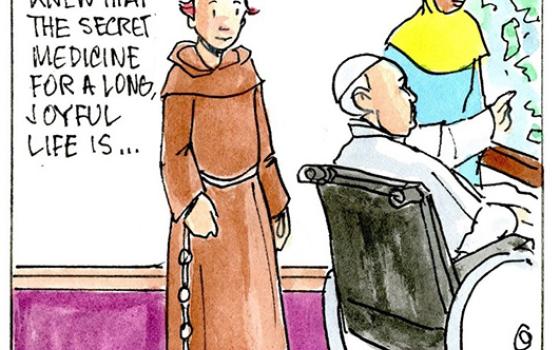The following is an entry from the journals of Henry David Thoreau, America’s great nature poet who kept a careful, eloquent record of his daily forays into the natural world. A keen lover of the passing seasons and the wild places, he described his life occupation as "observer of snowstorms." In this entry, he chronicles a little excursion in a boat on one of the small rivers around his home, Concord, Mass. It’s an exquisitely observed portrait of one of April’s most common dramas.
April 17, 1856. I start for Conantum in a boat, wind southwest. I can hide my oars and sail up there and come back another day. A moist muggy afternoon, rain threatening, true April weather, after a particularly warm and pleasant forenoon. The meadows are still well covered and I cut off the bends. The red-wing (blackbird) goes over with his che-e-e che-e chatter chatter. On Hubbard’s great meadow I hear the sound of some fowl, perhaps a loon, rushing through the water, over by Dennis’s Hill, and push for it. Meanwhile it grows more and more rain threatening – all the air moist and muggy, a great ill-defined cloud darkening all the West. I push on until I feel the first drops, knowing that the wind will take me back again. Now I hear ducks rise and know by their hoarse quacking that they are black ones, and see two going off as if with one mind along the edge of the wood.
Now comes the rain with a rush. In haste I put my boat about, raise my sail and, cowering under my umbrella in the stern, with the steering oar in my hand, begin to move homeward. The rain soon fulls up my sail and it catches all the little wind. From under the umbrella I look out on the scene. The big drops pepper the watery plain on every side. It is not a hard, dry pattering, as on a roof, but a softer, liquid pattering which makes the impression of a double wateriness. You do not observe the drops descending but where they strike, for they batter and indent the surface deeply like buckshot, and they, or else other drops, which they create, rebound or hop up an inch or two, and these last you see, and also when they fall back broken into small shot and roll up on the surface. Around each shot mark are countless circling dimples, running into and breaking one another, and very often a bubble is formed by the force of the shot, which floats for an entire half minute. These big shot are battering the surface every three inches or thicker.
I make haste to take down my sail at the bridges, but at the stone arches forgot my umbrella, which was unavoidably crushed in part. Even in the midst of this rain I am struck by the variegated surface of the water, different portions reflecting the light differently, giving what is called a watered appearance. Broad streams of light water stretch away between streams of dark, as if they were different kinds of water unwilling to mingle, though all are equally dimpled by the rain, and you detect no difference in their condition. As if Nature loved variety for its own sake.
It is a true April shower, or rain – I think the first of this month. It rains so easily. April has a genius for it, and infinite capacity for it. Many showers will not exhaust the moisture of April.
When I get home and look out the window, I am surprised to see how it has greened the grass. It springs up erect like a green flame in the ditches on each side of the road, where we had not noticed it before. Grass is born.



